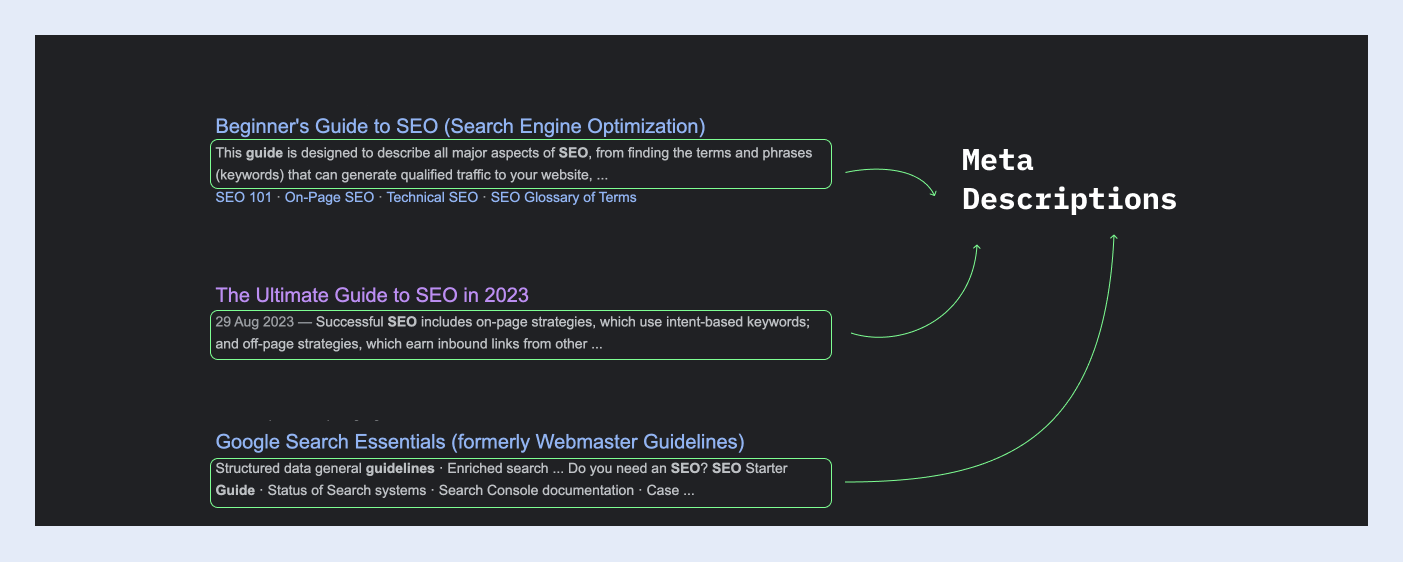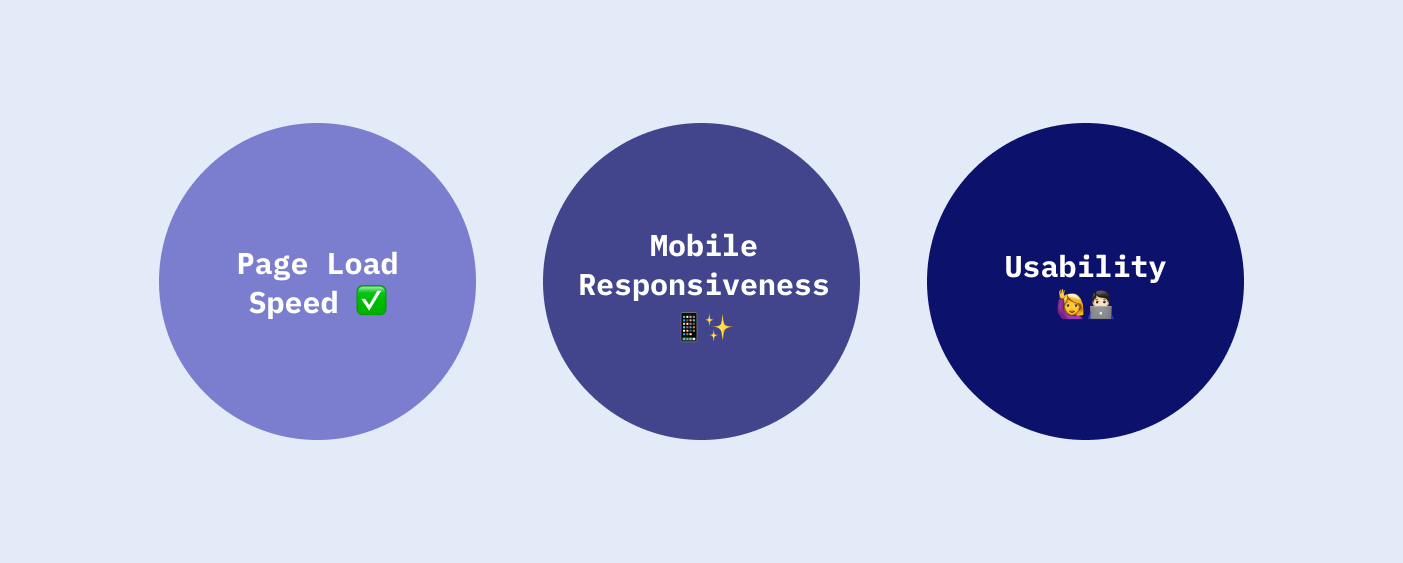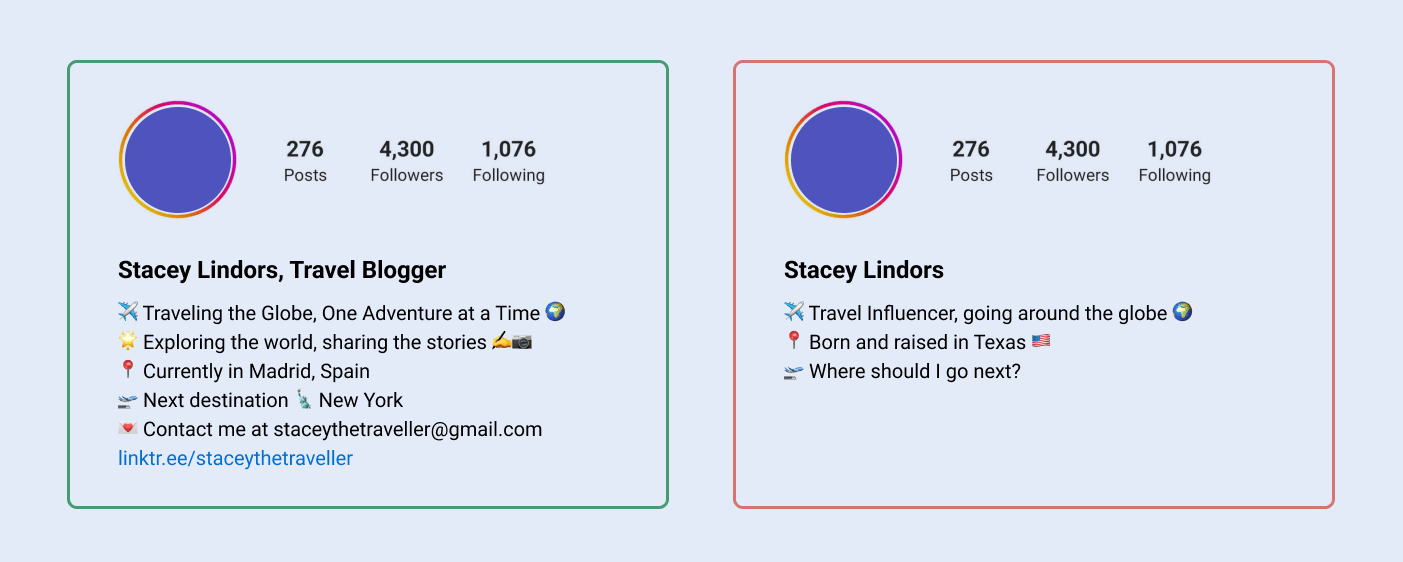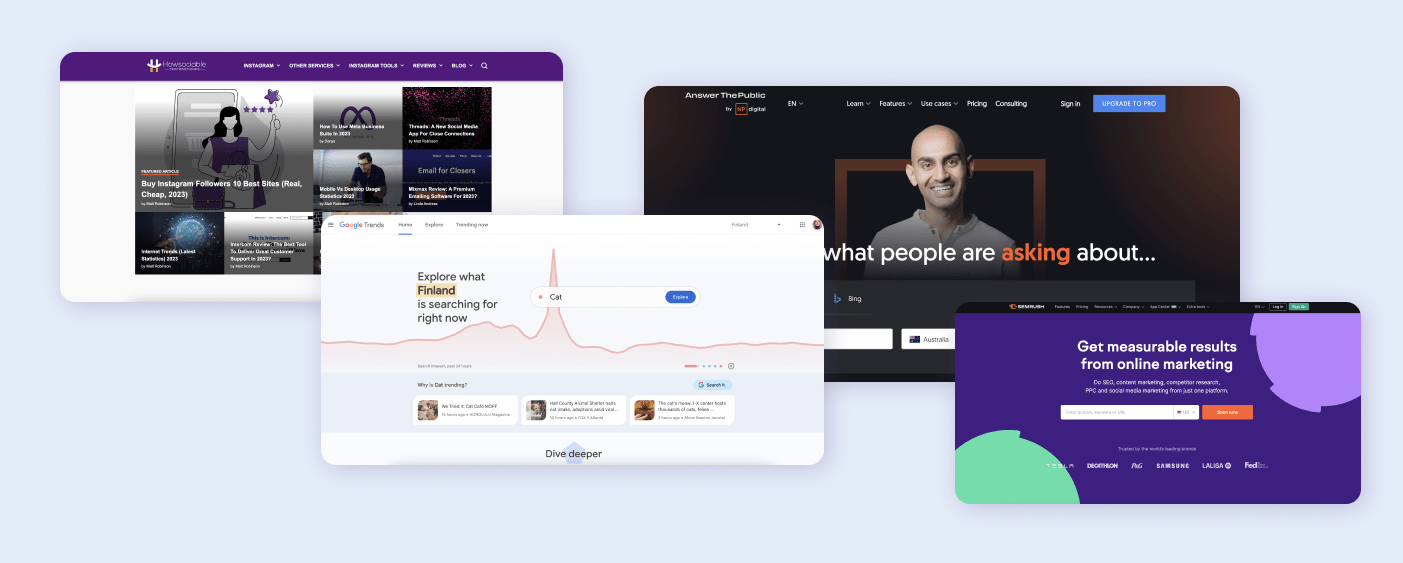Table of Contents
Get 10% Discount on Your First Order at Contenteam!
Having a strong online presence is essential for any business or individual looking to succeed. One of the most effective ways to improve your online visibility and reach your target audience is through content optimization for search engines.
SEO involves optimizing your website and content to rank higher in search engine results pages (SERPs), making it easier for people to find you online. In this guide, we'll take a deep dive into the world of SEO and about content optimization and how it helps to connect with your target audience.

Introduction to SEO and Its Role for Different Platforms
SEO is a complex and ever-evolving field, but at its core, it's about understanding how search engines work and using that knowledge to make your content more visible and accessible to your target audience. While SEO can be applied to various platforms and mediums, including websites, blogs, social media, and video platforms like YouTube and TikTok, the principles remain largely the same.
Search engines like Google use complex algorithms to determine which websites and content to show in their search results. These algorithms consider many factors, including keywords, content quality, backlinks, and user experience. By optimizing your content for these factors, you can improve your chances of ranking higher in search results and reaching a wider audience. In this article, we will discuss utilising these strategies to make your content stand out.
Unraveling the Advantages of Content Optimization
1. Optimizing Content for Higher Search Rankings

By optimizing content for different search engines, you set your web pages or social media channels on a path to go up the ranks in search results. This, in turn, holds the promise of increased organic traffic and heightened exposure for your website, content or any other digital resources. As your content aligns with search engine algorithms, it becomes more likely to capture the attention of users actively seeking information or products related to your field.
2. Boosting Website Traffic
The primary objective for website visits is to attract organic traffic, which can be accomplished through SEO content. Organic traffic refers to visitors who discover your website through non-paid means. By creating content that incorporates appropriate keywords, proper formatting, and engaging visual elements, you can significantly enhance the traffic potential of your website or other online resources.
3. Brand Illumination
More people will see your brand when your web pages appear higher in search results. Increased visibility can increase engagement and interaction with your brand, raising awareness and exposure. SEO content can act as a guide to help users find your digital presence.
Sharing valuable content can establish you as a trustworthy source and amplify the reach and impact of SEO-optimized materials. By recommending helpful and engaging content, you can contribute to knowledge sharing and benefit your brand and the broader digital community.
4. Lead Generation
SEO content is the engine behind lead generation. By aligning with user needs through relevant keywords and delivering quick, valuable information, it easily guides users to what they desire. When users find what they seek without frustration, their satisfaction translates into actions—sign-ups, inquiries, or purchases. This synergy creates leads and loyal customers, setting the stage for long-term growth.
5. Lasting Online Success
The beauty of SEO content lies in its ability to deliver enduring rewards. You consistently produce high-quality content by cultivating your website's or other media channels' authority and credibility. This foundation ensures a lasting online presence that drives sustained traffic and conversions.
In digital marketing, SEO content emerges as a versatile and indispensable tool. It propels your web pages to new heights, attracts organic traffic, amplifies brand exposure, generates leads, and promises enduring online success. As you refine your SEO content strategies, you forge a path toward greater visibility and influence in the digital realm.
The Basics of Content Optimization for SEO
1. Conducting Keyword Research for SEO Content optimization

Keyword research is a critical component of SEO content optimization. It involves identifying the keywords and phrases your target audience uses to search for information related to your industry or niche. This can be done using keyword research tools like Google Keyword Planner, SEMrush, Ahrefs, Surfer SEO and whatnot.
To conduct keyword research, brainstorm a list of potential keywords and phrases related to your industry or niche. Then, use a keyword research tool to identify each keyword's search volume and competition level. Look for keywords with high search volume and low competition, which will be the easiest to rank for. Once you've identified your target keywords, you can incorporate them into your content naturally and effectively. This involves optimizing your headlines, subheadings, meta title and descriptions, and body copy to include your target keywords without overstuffing them.
A little content optimization trick: try using your main keyword once in the first 100-150 words of your articles. How can it help? Google puts more weight on terms that show up early in an article/page/post. It is simply something that helps search engines understand that your content is truly about the subject that your title inclines.
2. Quality Content for Engaging Audiences

The cornerstone of effective content optimization lies in the quality of your material. Here's the breakdown:
Originality: Craft content that's unique and original. Duplicating existing material hinders your SEO efforts and fails to captivate your audience.
Detail: Dive deep into your subject matter. Detailed content not only showcases your expertise but also satisfies user curiosity. Back your claims with data, provide links to related resources and demonstrate that your content results from thorough research and expertise, not mere conjecture.
Engagement: Create content that engages and resonates with your audience. An engaged audience is likelier to share your content, boosting your online presence. Case studies, project process breakdowns, and sharing failures and successes make your content more real.
Address User Intent: Understand user intent to create content that directly addresses their needs, offering valuable solutions. Your business showcases a customer-centric approach by addressing their struggles and pain points.
Comprehensive Information: Go the extra mile. Provide complete information that leaves no questions unanswered. This enhances user experience and positions you as a reliable source of information.
Incorporating these content optimization principles into your own content ensures that you're all set for search engines and ready to provide real value to your target audience.
3. URL Optimization

Efficient URL optimization is your secret weapon:
Descriptive and Short URLs: Design URLs that offer a clear and short yet concise preview of your content's topic. These straightforward web addresses benefit users and search engines, simplifying content comprehension. For example, if you are talking about different content types for Instagram, you want that to be in your URL.
Keyword Integration: Don't underestimate the importance of keywords in your URLs. Including relevant keywords in your web addresses provides vital information to search engines, contributing to better rankings.
4. Internal Linking

As you optimize your URLs, remember that short, keyword-rich URLs and strategic internal and external links are key ingredients for enhancing your content's visibility and SEO performance.
Internal links are the links on your page that lead to other pages on your site. It may be a CTA to the contact page, service details, a link to your previous blog post relevant to the subject, etc. Internal links are a fundamental part of SEO for two reasons:
Discoverability for Search Engines: Internal links assist search engines in uncovering and indexing new pages on your website, ultimately influencing their ranking in search results.
Extended User Engagement: Internal links serve as a pathway to keep users engaged and exploring your website for extended periods. This prompts algorithms that your content is interesting and relevant to the reader.
When incorporating internal links into your content, ensure that your anchor text is not just a pointer but a guide. Imagine you're writing a blog post about crafting the perfect chocolate cake. You've previously delved into the world of chocolate types in another blog post, discussing the best choices for baking.
In your current blog post, your anchor text could look like this: "There are many different types of chocolate you can use to make this cake — the best one depends upon the richness and flavour you're looking for in your cake."
By creating anchor text that aligns seamlessly with the context of your content, you not only enhance user experience but also provide search engines with clear signposts, allowing them to navigate and index your website effectively. It's a small yet crucial detail in your content optimization journey. Here is an article that may help you better understand the best practices for creating anchor links.
5. The Importance of Back Links

Linking out to authoritative and related pages reinforces your content's topic in the eyes of search engines. It signals that your page is a valuable source of quality information. In fact, experiments have shown that websites with external links tend to outrank those without them, validating their significance.
Reboot Online has a great study on this subject that will give you a better understanding of why backlinks matter.
6. Image Optimization

Images are often overlooked when it comes to on-page SEO, yet when optimized effectively, they can drive significant traffic and enhance the overall health of your website's SEO.
Here are a few practices for optimizing images that will help you boost your SEO score:
Descriptive File Names: Ensure your image file names are descriptive and relevant to the content you pair them with. This aids search engines in analyzing the context of your images, contributing to improved rankings.
Alt Tags: Alt tags enhance SEO and provide essential accessibility for visually impaired users, offering descriptions of images they may not see.
Captions: Incorporate informative captions for images. Captions provide additional context, benefiting search engines and users and making your content more engaging and accessible.
By optimizing your images in these ways, you not only bolster SEO but also ensure that your content is accessible to a broader audience, including those with visual impairments.
Meta tags and descriptions are vital for SEO and user experience. They help search engines and users understand your page's content. To keep them effective in the dynamic online world, follow these tips for optimizing and updating your meta tags and descriptions.
7. Mastering Meta Tags

Let's cover a few different types of meta tags and what they do for content optimization:
Title Tags
Title tags play a vital role in SEO by providing search engines and users with information about the content of a webpage. They assist in making the article easier to comprehend and help users establish a link between the heading, title, and content in less time. To enhance title tags, it is recommended to include the main keyword of the article and keep them within 60-65 characters in length, with target keywords placed at the beginning. Ensure each page has a unique target keyword to avoid dividing traffic and diluting ranking for the correct page.
Meta Description
Meta descriptions are critical for website optimization as they summarise a web page's content - a little snippet we see under the title when scrolling through the search results. To optimize meta descriptions, it's crucial to ensure they're unique, concise, accurate, and contain relevant keywords. Google recommends keeping the meta description length under 155 characters.
Image Alt Attributes And Other Meta Tags
We already covered how including image alt attributes is essential for SEO and accessibility. Descriptive alt text helps visually impaired users and search bots understand your webpage. Optimizing meta tags and descriptions can improve search engine rankings and website performance.
Consider this a sneak peek into the world of meta tags. There's a treasure trove of detailed articles out there that can guide you through crafting flawless meta tags and descriptions.
8. Elevating User Experience (UX)

Improving your website's User Experience (UX) is crucial for success. To enhance your SEO efforts, prioritize the following:
Page Load Speed: A fast loading time prevents visitors from leaving your site.
Mobile Responsiveness: Optimize your website for mobile users.
Usability: Ensure easy navigation and content accessibility for a smooth user journey
A delightful user experience keeps visitors engaged and helps improve your search engine rankings.
Content Optimization for Social Media Platforms, Including TikTok, Youtube, and Instagram
Digital marketing constantly changes, and search engine optimization (SEO) is no longer limited to websites. Social media platforms have become powerful tools for increasing brand visibility and engagement. To succeed in this fast-paced environment, knowing how to use SEO and content SMO (social media optimization) strategies is essential to improve your content. In this section, we'll review various tactics and techniques to help you stand out in the crowded online world. Discover how to apply content optimization principles to impact social platforms the most.
Engagement Optimization for Social Media
Social Media Optimization (SMO) encompasses a range of strategies, from improving your post content to redefining your brand's social tone. The key element in SMO is data-driven decision-making based on performance analysis, audience insights, competitor research, and social listening. SMO is your opportunity to enhance your online presence for optimal performance. In the following sections, we'll explore some effective SMO strategies to elevate your social media efforts and engage your audience:
Post at the Right Time: Discover the optimal moments when your audience is most active and receptive to your content.
Ask Engaging Questions: Spark conversations by posting content with questions that prompt your followers to share their thoughts.
Leverage Carousel Posts: Carousel posts grab attention and boost engagement by keeping users engaged for longer, signaling to the algorithm that the content is interesting.
Find the Ideal Posting Frequency: Strike the right balance between posting too much and not enough, tailored to each social platform.
Here's how often you should post to the biggest social media networks, according to experts:

- On Instagram, post between 3 to 7 times per week.
- On Facebook, post between 1 and 2 times a day.
- On X (Twitter), post between 1 and 5 Tweets a day.
- On LinkedIn, post between 1 and 5 times a day.
- On TikTok, post between 1 to 4 times a day.
These strategies will help you unlock the full potential of social media optimization and elevate your digital presence.
Maximizing Social Media Reach Through SEO Optimization
Most social media platforms have search engines that react to keywords as well as regular search engines do. Let’s go through a few easy things you can incorporate in your social media strategies to make your page or content pop up on the Discover page or search results:
Optimize Your Bio for SEO

Your social media bio is like a virtual business card. It's the first impression you make on potential leads and curious visitors. Make sure it provides essential information while using a clear brand tone.
Who you are / what your business is
The problem your business solves / addresses or your value proposition
Contact details & location
These are, perhaps, the most important things to include; then you can add an interesting fact about you / your brand (selling point); it could be something like "Getting my clients 1M views on their reels."
Use Keywords in Captions

The trend of using one-word captions on social media is gone. Platforms like Instagram, YouTube, and TikTok now suggest including relevant keywords in post captions to enhance discoverability and drive more organic traffic. Writing more extended captions increases the chances of your content being found in social media search results.
Mastering the Art of Hashtags
Hashtags are a crucial tool for marketers. In 2022, Instagram released helpful recommendations on how to use them effectively:
Place hashtags directly in the caption
Use relevant hashtags that describe the subject of your post
Try creating a mix of highly used fields of activity and specific (the ones that describe your post the best) hashtags
Do not overuse hashtags: 3-5 hashtags is a good amount
Avoid irrelevant or overly generic hashtags, like #explorepage
While Instagram offers these tips, they can be considered best practices across all social networks. Nearly every platform has shared similar advice for social media content optimization.
Content Optimization for Social Media: Choosing the Right Format

Social media platforms like TikTok, YouTube, and Instagram can be great tools if you want to reach your target audience and build your online presence. Conten optimi But to optimize content for each platform, you need to understand their unique characteristics and choose the right content format.
For TikTok, create engaging videos creatively showcasing your brand or product. Using trending hashtags and music tends to increase the chances of your content being discovered by new audiences.
For YouTube, focus on creating informative, high-quality videos that answer your audience's questions and provide valuable insights. Use engaging titles and descriptions to capture viewers' attention, and include calls to action to encourage them to subscribe to your channel or visit your site.
For Instagram, focus on creating visually appealing content that showcases your brand or product authentically and relatable. Use hashtags and captions to boost the reach of your content and engage with your audience by responding to comments and messages.
For LinkedIn, it's important to share industry insights, engage with your connections, and publish content that showcases your expertise. Creating a "How To" guide can also be a helpful way to demonstrate your knowledge and expertise. To maximize your impact, be sure to connect with others consistently and post content regularly.
In summary, search engine optimization (SEO) now encompasses social media platforms such as TikTok, YouTube, Instagram, and LinkedIn. Utilizing data-driven tactics, such as strategic posting and keyword optimization, is crucial to making your content more visible. Nevertheless, avoiding blindly implementing these tips into your content is important. Consistent analysis of your content and adjusting it to your audience's preferences is vital for long-term success.
Utilizing Content Optimization Tools

There are many content optimization tools available to help you with improving your SEO results. These tools can help you identify keywords, conduct competitive analysis, and track your search engine rankings.
Some of the most popular SEO tools include:
Google Analytics: A free tool that provides insights into your website traffic and user behaviour.
Google Keyword Planner: A free tool that helps you identify keywords and estimate their search volume.
SEMrush: A paid tool that provides in-depth SEO analysis and competitive research.
Ahrefs: A tool that provides insights into your backlink profile and helps you identify link-building opportunities. This content optimization tool also has services like title generator, keyword explorer, and website audit.
AnswerThePublic: An affordable SEO tool that helps with keyword research.
Now for Social Media Optimization (SMO), you can explore the following free tools:
Semrush.com: Helps find competitor organic search rankings and provides insights into social media performance.
Google Trends: Offers keyword demand trends to optimize social media content.
Howsociable.com: Provides a social visibility score to measure your brand’s presence on social media.
Conclusion: Taking Your Content to New Heights With SEO
To effectively connect with your target audience and expand your reach, it's essential to have a solid understanding of content optimization strategies for search engines. Whether you're creating articles, social media posts, or videos, the fundamental principles of SEO content optimization remain the same.
By adhering to the best practices outlined in this comprehensive guide and leveraging the power of content optimization tools and AI technology, you can optimize your content faster and monitor your progress easier. With a strategic mindset and a commitment to excellence, you can take your content creation efforts to the next level and achieve your digital marketing goals.
